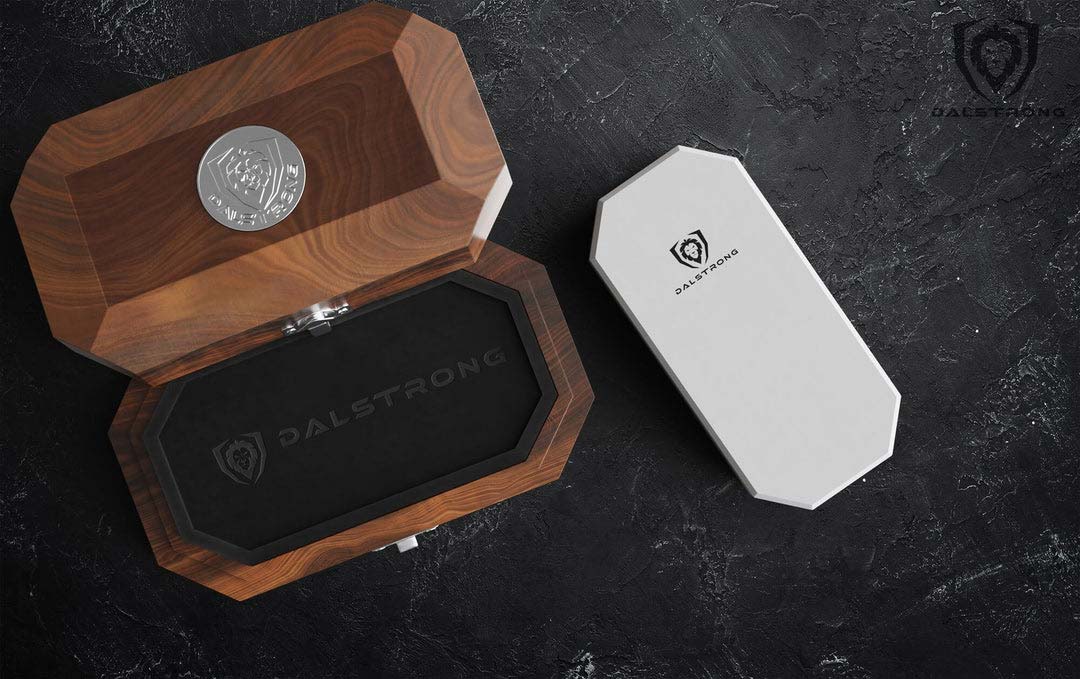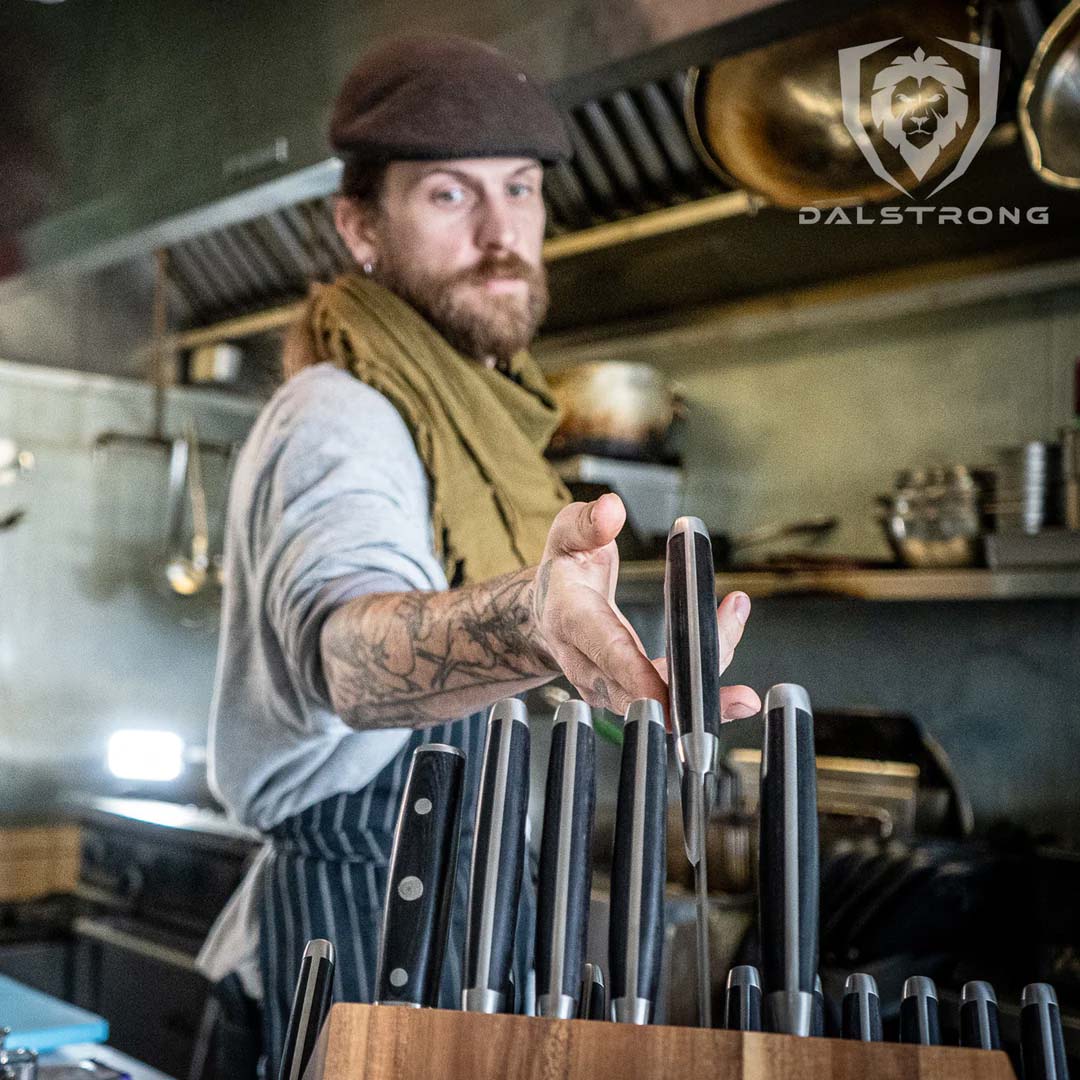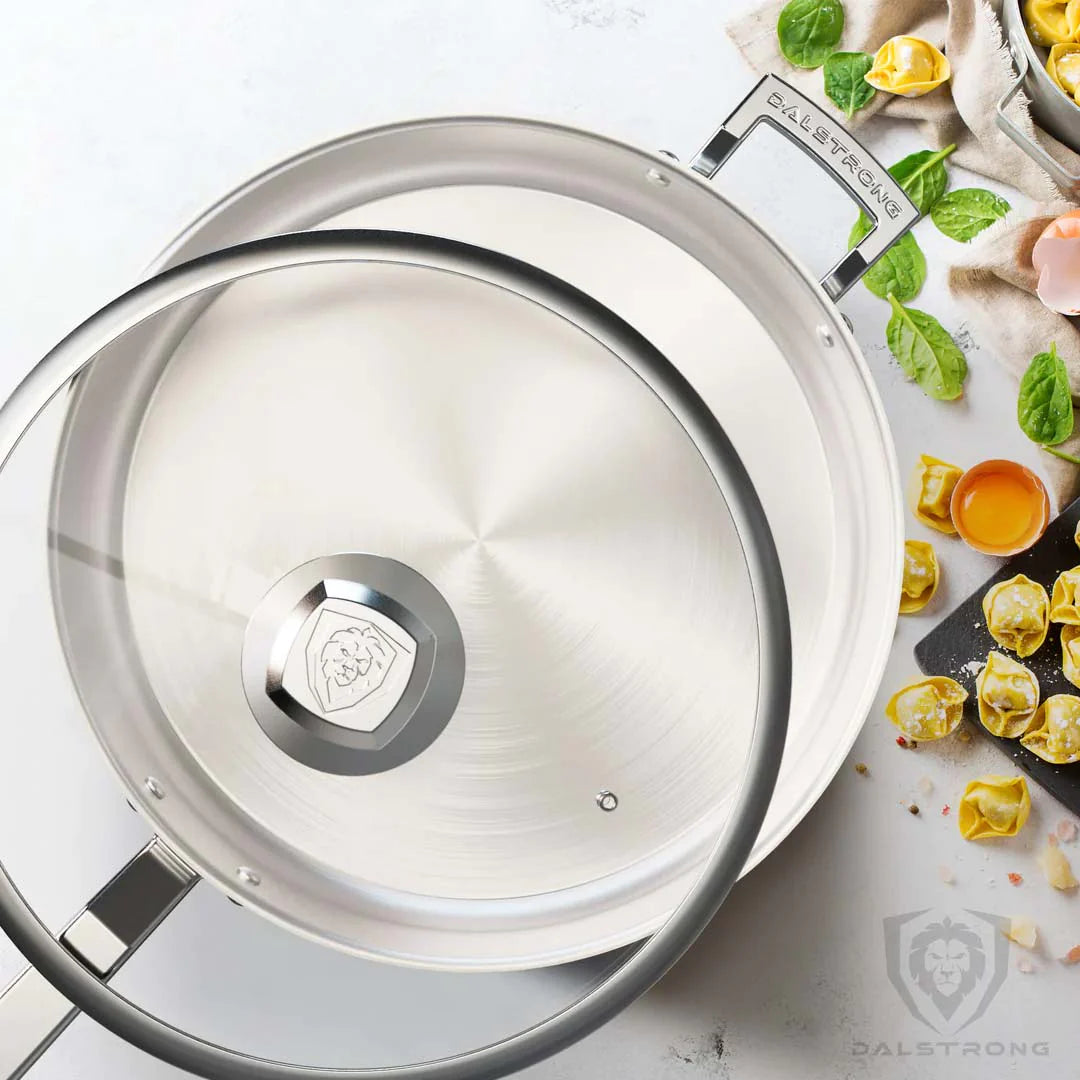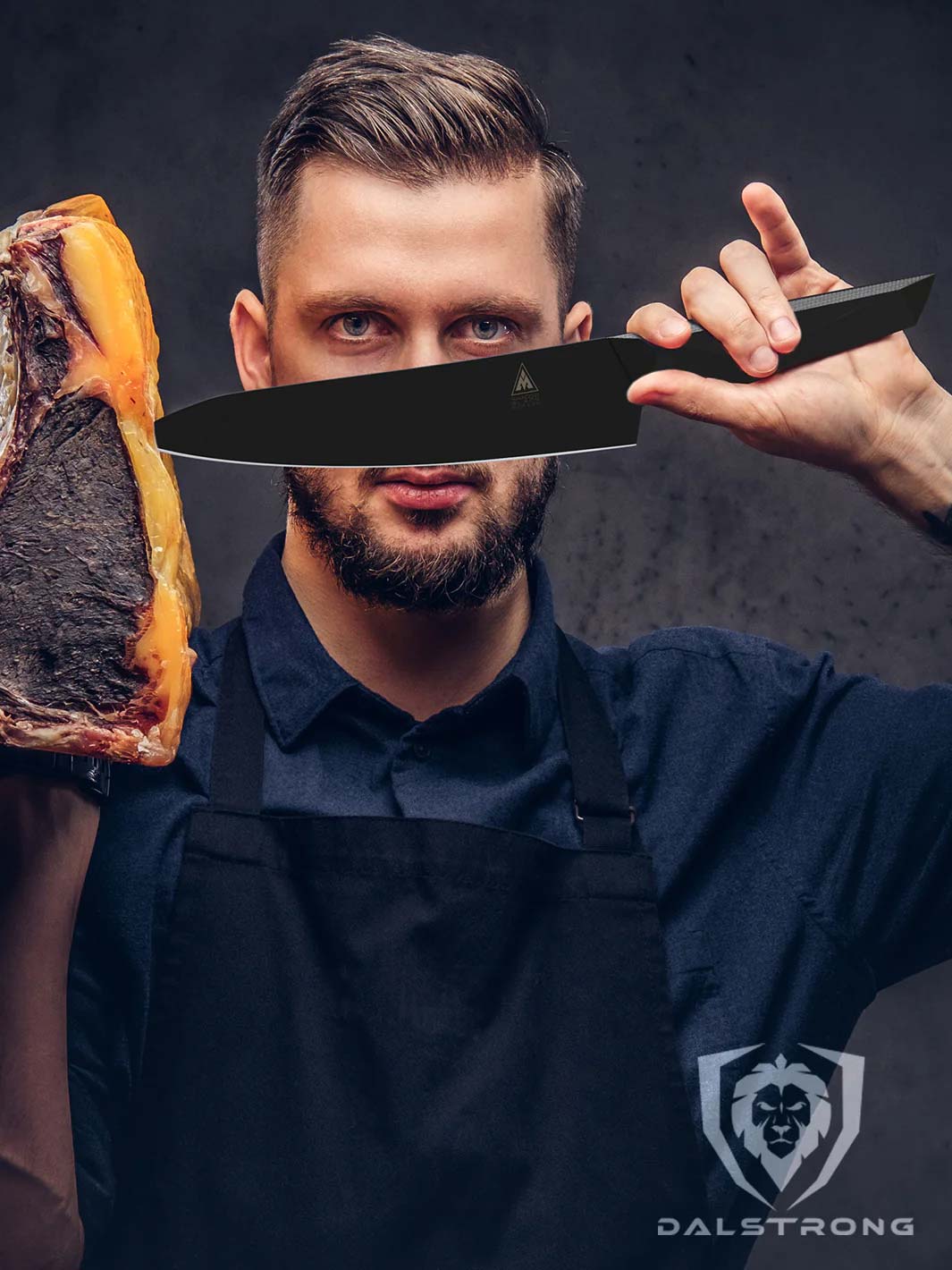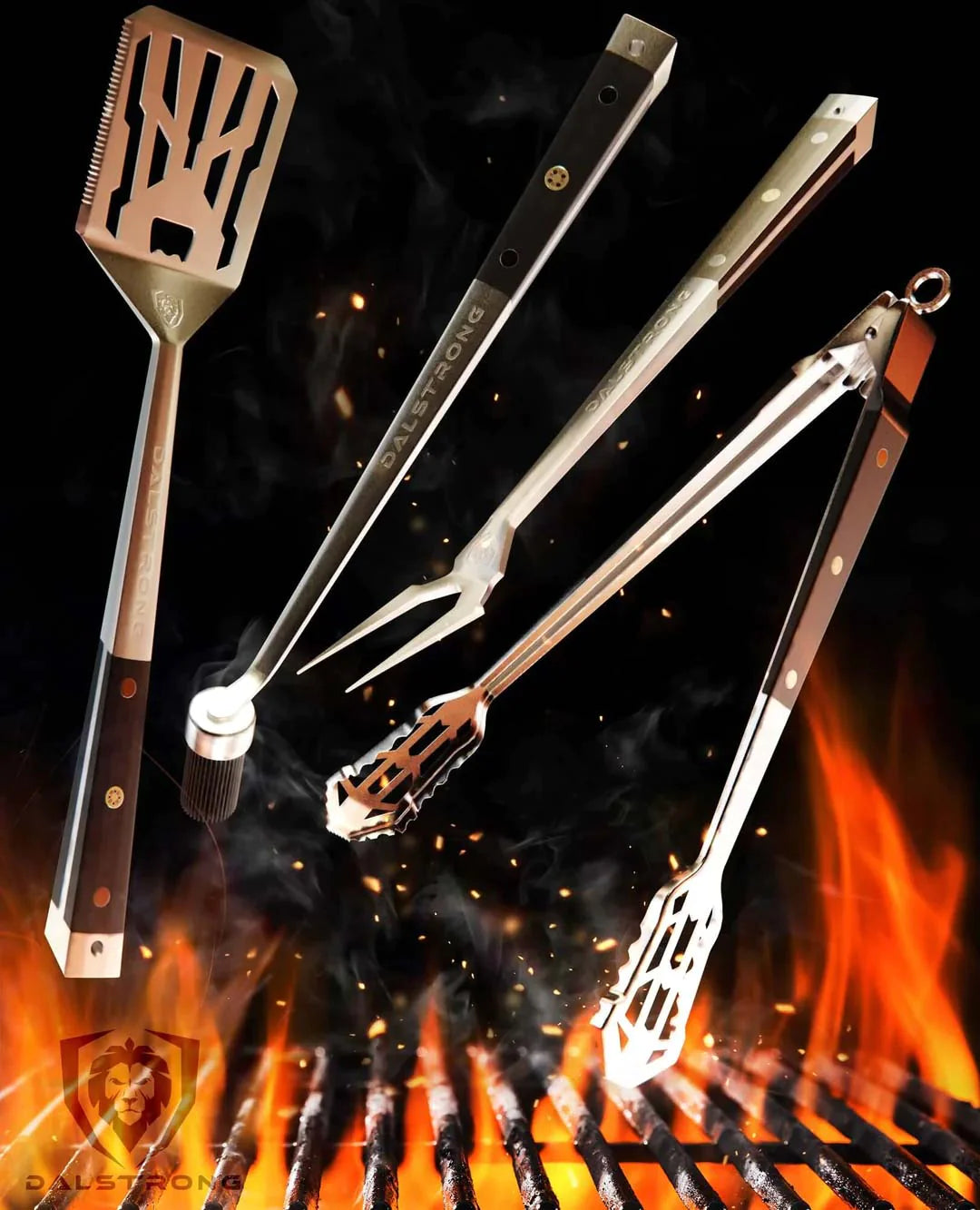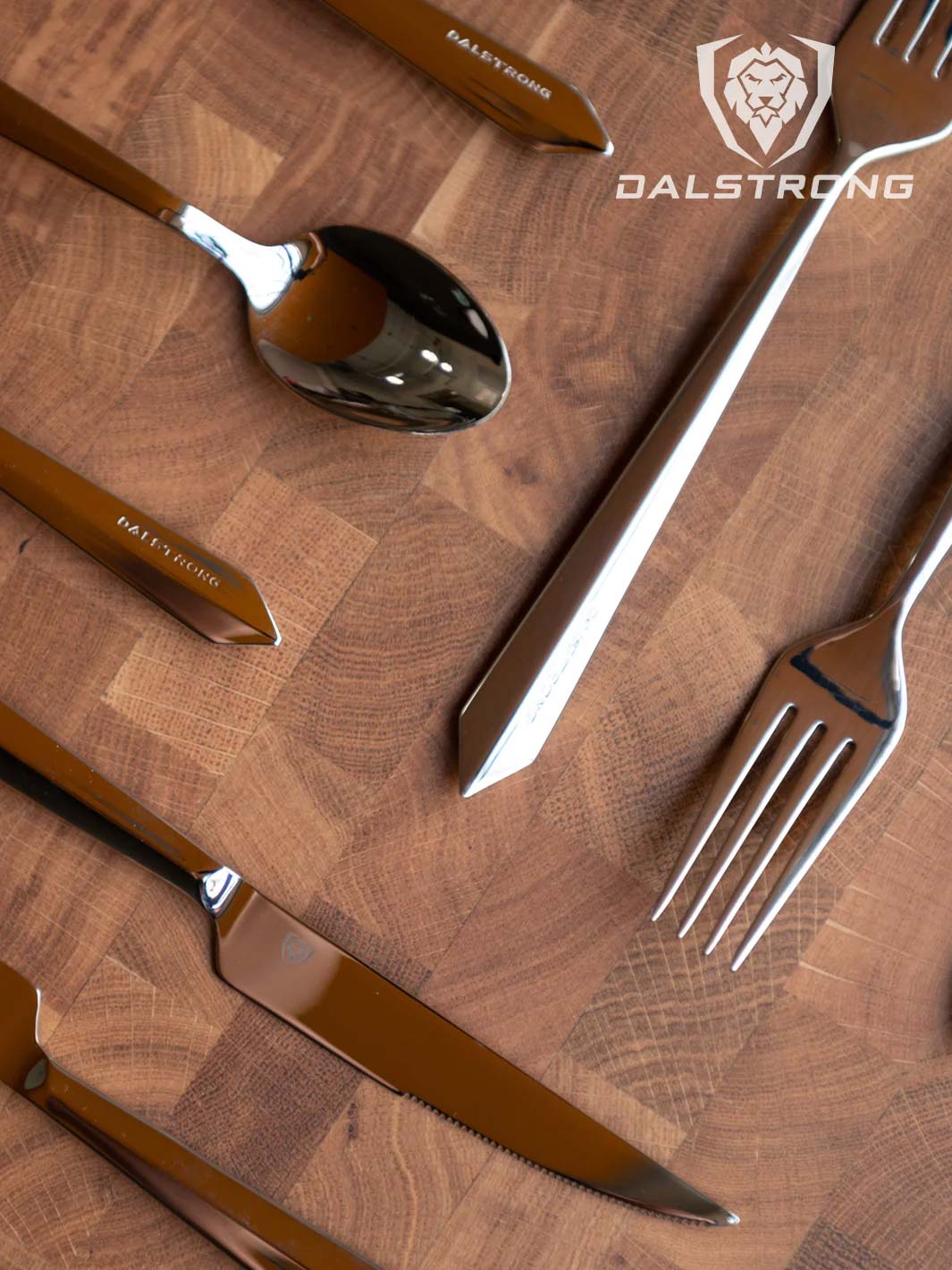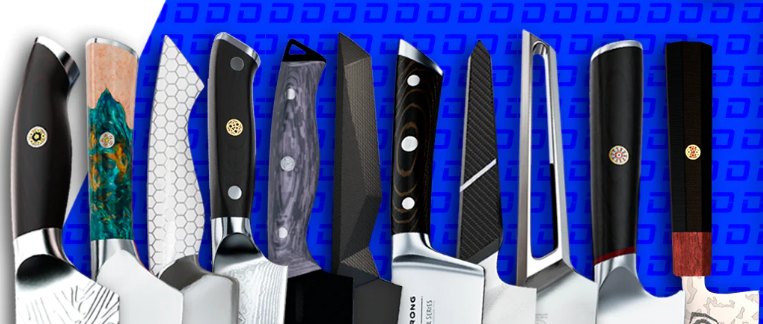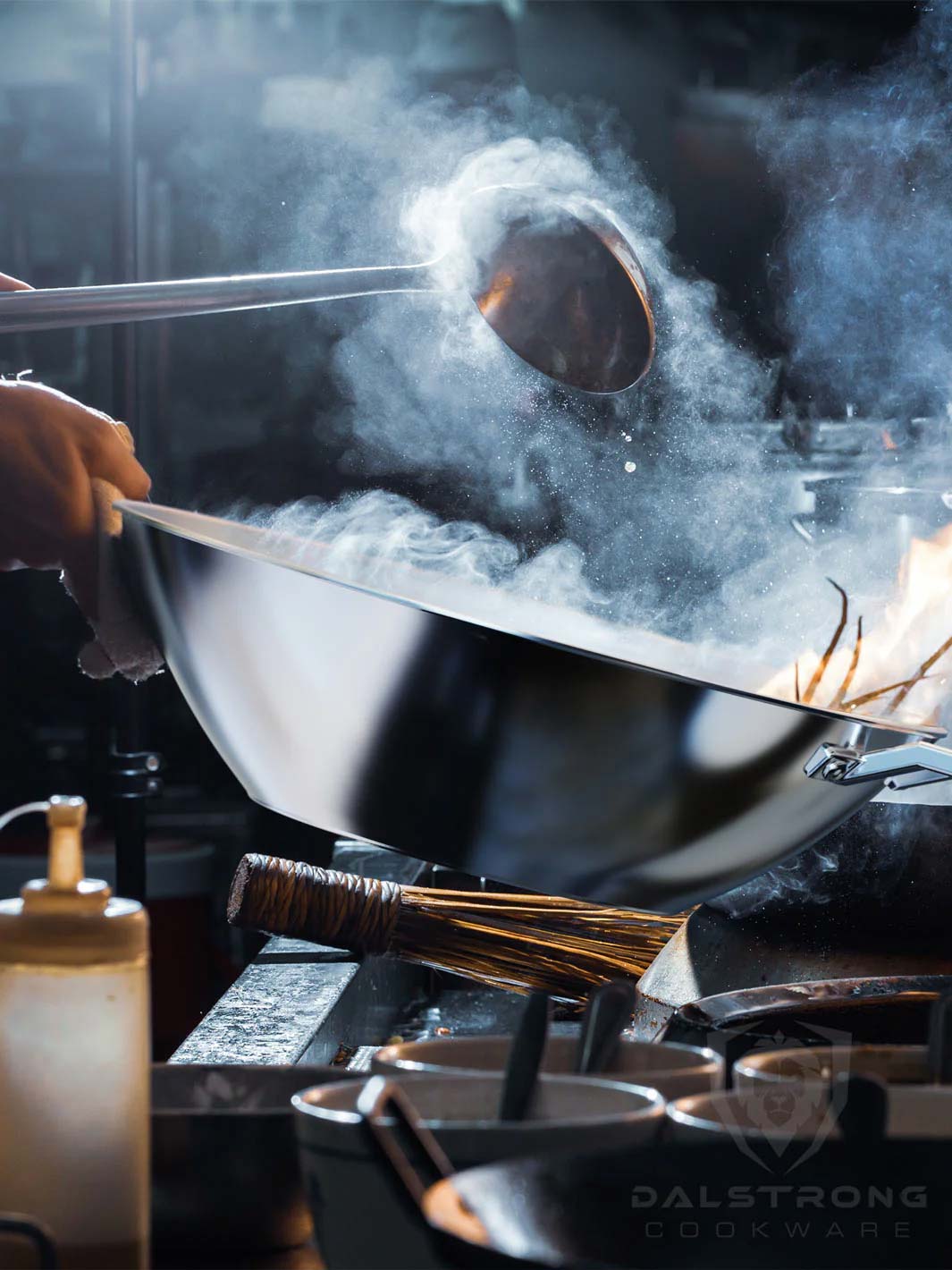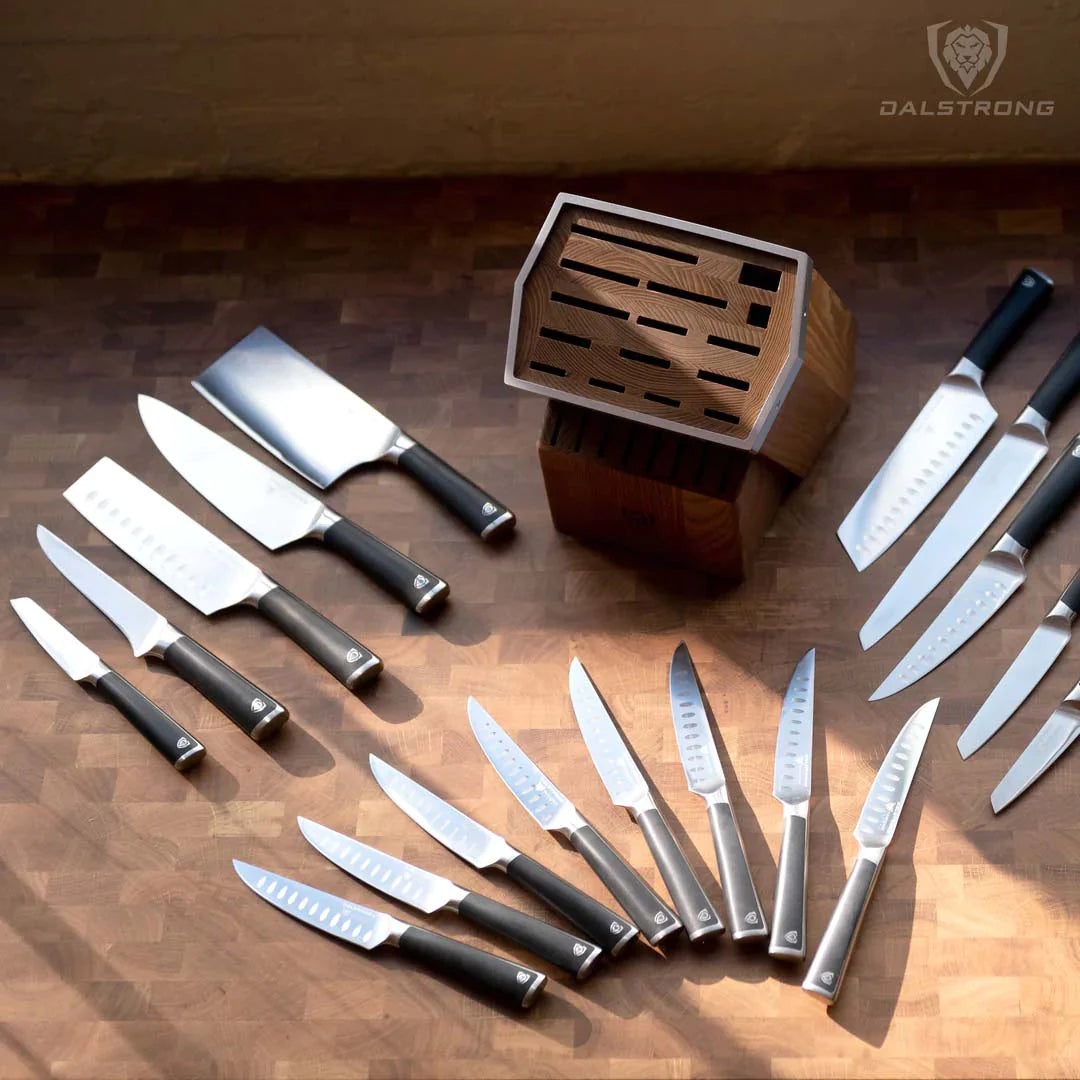What Are the Types of Steak Cuts?

Valhalla Series Fillet Knife 6.5"
Ribeye, filet mignon, New York strip, and more. Let's explore the different types of steak cuts, and what sets them apart in terms of flavor, tenderness, and juiciness.
1. What Are The Types Of Steak Cuts
Steak cuts are as diverse as they are delicious, offering a wide range of flavors, textures, and cooking possibilities. Whether you’re grilling, pan-searing, or going for a sous vide adventure, knowing your beef cuts is the first step toward steak mastery. Below are some of the most popular and tasty cuts, from tenderness and juicy delights to bold, beefy treasures
However, keep in mind, this is just a smattering of some of the most popular ones. Different regions have different cuts, and different names for those cuts, all over the world. For instance, I live in Argentina, and many of the most popular cuts down here aren't represented in the list below. However, this is still a pretty good collection of the most popular ones.
Sirloin steak
The sirloin steak is the dependable friend of the steak world, always ready for a last-minute BBQ or a casual weeknight dinner. Cut from the loin primal, it strikes the perfect balance between flavor and affordability. While it may not be the most tender cut, it still brings plenty of bold beefy flavor to the table, making it a favorite for both grilling and pan searing.
Don’t sleep on the top sirloin -- it’s great for those looking for a steak that’s tender enough without breaking the bank. And let's not forget sirloin tips, which can make for a killer stir fry or kebab.
Ribeye steak
If you’re all about rich marbling and bold flavor, the ribeye steak is your go-to. It’s cut from the rib section, where that beautiful intramuscular fat delivers an incredibly juicy, tender bite. The fat melts as you cook, creating that deliciously beefy flavor we all crave. This cut is a favorite for grilling but also excels when cooked in a cast-iron skillet. For an even more primal experience, opt for the cowboy steak or the bone-in ribeye, also known as bonein ribeyes -- because why not add some extra drama to your plate?
Filet mignon
If you’re craving something melt-in-your-mouth tender and flavorful, this is your cut. Sourced from the tenderloin, it’s the most tender cut you’ll find, and it’s also one of the most expensive cuts due to its low fat content. This is the steak to bring out for those special occasions -- you know, when you’re really trying to impress. Despite being low on fat, filet mignon’s tenderness makes it a true showstopper. Pair it with a rich sauce or just a simple butter finish, and you’re golden.
Strip steak (New York Strip or Kansas City Strip)
The New York strip steak, also called the Kansas City strip, is one of the most popular cuts in steakhouses across the globe. It’s cut from the short loin, offering a perfect balance of tenderness and flavor. Not quite as fatty as a ribeye but still tender and juicy, the strip steak is great for grilling, especially when you’re after that beautiful crust. Want to be fancy? It’s also known as york strip steaks -- same cut, different name, but always a hit at the dinner table.
Hanger steak
Ever heard of the hanger steak? It’s the steak aka “butcher’s cut,” because butchers used to keep this flavorful gem for themselves. It’s incredibly tender when cooked properly, and it packs a serious punch of flavor. While it’s not as common in grocery stores, it’s worth seeking out if you want to impress your fellow steak lovers. Marinate it, grill it, and slice it thin -- you won’t be disappointed.
Flat iron steak
The flat iron steak is the cool, underrated cousin of the more popular cuts. It’s taken from the shoulder, where it’s known for its incredibly tender texture despite being a budget-friendly option. This steak is ideal for both grilling and pan searing, and it’s versatile enough for quick weeknight dinners or more elaborate meals. Bonus: it doesn’t require any fancy cooking methods to shine, so even home cooks can master it.
Skirt steak
A superstar in fajitas and stir fry, skirt steak is all about flavor. It comes from the diaphragm of the cow and tends to be a bit tougher, which is why it’s crucial to slice it against the grain. Thin slices keep the steak tender, and a high-heat, quick cook locks in all those juices. Whether you’re marinating it or cooking it straight up, skirt steak always delivers.
Flank steak
Similar to skirt, flank steak comes from the lower abdomen of the cow. It’s lean, with long, muscle fibers that can be a bit tough if not sliced properly, but when you cook it hot and fast, it’s packed with flavor. Perfect for grilling, it’s often marinated to add extra tenderness. The key? Slice it thin, just like skirt, and you’ll have a steak that’s tender and juicy.
Tri-Tip steak
Out West, especially in Santa Maria, the tri tip steak reigns supreme. Cut from the bottom sirloin, it’s tender, juicy, and perfect for grilling or roasting. Add some dry rubs, sear it, and then slow-cook it for that extra layer of smoky flavor. It’s the popular cut of steak for a reason -- whether you're grilling for a crowd or whipping up a casual dinner, tri-tip delivers.
Denver cut
For those who love to explore lesser-known steak types, the Denver cut is a must-try. It’s tender and affordable, taken from the chuck section. Denver cuts have great marbling, making them perfect for grilling or pan searing. They’re often compared to the more expensive wagyu beef or kobe beef, but without the hefty price tag.
Other notable steaks
T-bone steaks: These are like a two-for-one deal -- a filet mignon on one side and a strip steak on the other. Ideal for those who want the best of both worlds.
Porterhouse steak: Think of this as the T-bone steak’s big brother -- same concept but with a larger portion of tenderloin. Great for sharing (or not).
Tomahawk steaks: If you want to make a statement, look no further. This ribeye comes with an impressively long bone, perfect for those who like their dinner to double as an Instagram post.
Ranch steak: Don’t overlook this lean, budget-friendly option. Cut from the chuck, it’s less tender but packed with flavor. Perfect for grilling when marinated.
Eye of round and round roast: Lean and flavorful, these beef cuts come from the hindquarters. They’re best for slow cooking or braising to break down the connective tissue and bring out their best.
Top round steak: Another lean option, top round is great for roasts or slicing thin for sandwiches or stir fry.
Flap steak: Similar to skirt or flank, flap steak is flavorful and best when marinated and cooked quickly at high heat.
Rib roasts: Known for their tenderness and rich flavor, these are cut from the same section as the ribeye and are perfect for special occasions.
Grilled T-bone steak: Best served hot off the grill, this steak is a meat lover’s dream. Just a sprinkle of seasoning and you’ve got a showstopper.
Read about the nutritional facts and health benefits of beef, here.
2. Knife Skills For Cutting Steaks
 Shogun Series BBQ Pitmaster & Meat Knife 8"
Shogun Series BBQ Pitmaster & Meat Knife 8"
So, you’ve picked out your perfect cut of beef -- whether it’s a juicy tbone steak or a lean top sirloin -- and now you’re ready to cook. But hold up! Knowing how to slice that delicious hunk of meat is just as important as the cooking itself. No pressure, but the way you cut can make or break the tenderness of your steak. Don’t worry, though -- it’s easier than it sounds.
First things first, let’s talk about the golden rule of slicing steak: cut against the grain. If you’ve been to a fancy cooking class, this is probably one of the first lessons you learned. But if not, let me break it down for you.
Cutting against the grain
You know when you look at a piece of steak, and you can see all those lines running in one direction? Those are the muscle fibers, and if you slice parallel to them, your steak will be chewy and tough -- not the vibe we’re going for. Instead, you want to cut against the grain, which shortens the muscle fibers, making each bite more tender.
This is especially important for steaks like skirt steak, flank steak, and round steaks -- the cuts that are a little leaner and need all the help they can get in the tenderness department. Trust me, one quick adjustment with your knife, and you’ll go from “meh” to “wow” in no time.
Sharp knives are your best friend
You’ve heard the saying, “A sharp knife is a safe knife,” right? Well, it’s true. The worst thing you can do is hack away at a cut of meat with a dull blade, sawing back and forth like you’re trying to chop down a tree. Not only does this increase your chances of slipping and giving yourself a nasty cut, but it also mangles your steak, leaving you with a jagged, uneven surface. That’s not the look we’re going for.
Whether you're working with boneless steaks, short rib, or a thick top round cut, a sharp chef’s knife is your best tool. If you're really committed, consider keeping a sharpening stone handy or investing in a quality knife sharpener.
Investing in the right knife
You wouldn’t try to drive a nail into the wall with a shoe, right? The same logic applies to cutting your steak. Investing in a good knife is like upgrading your toolkit -- it just makes everything easier. A solid chef’s knife is essential, but depending on the cut you’re working with, you might also want a boning knife for trimming fat or cutting the short ribs, or a carving knife for larger roasts like london broil or rib roasts.
And hey, if you’re feeling fancy, you can always take it up a notch with a professional knife set. The difference it makes when slicing through a perfectly cooked top sirloin is undeniable -- it’s like butter! We've laid out some options in the "must-have knives" section below. Check 'em out!
Why it matters
A good steak is an experience. When you’re cutting into that sizzling, grilled tbone steak or perfectly roasted short rib, you want the knife to glide effortlessly, revealing the juicy pink inside. The way you slice can unlock the full potential of your steak, ensuring that it’s as tender, flavorful, and satisfying as possible.
Learning the proper knife skills is like taking a mini cooking class in your own kitchen. Once you master these techniques, you’ll not only avoid turning your steak into leather, but you’ll also impress anyone lucky enough to share your table. Whether you’re prepping for a casual weeknight meal or hosting a cookout with your prized round steaks or top round, your knife skills will be the secret ingredient to that "wow" factor.
3. General Safety For Cutting Steaks
 Valhalla Series Slicing & Carving Knife 12"
Valhalla Series Slicing & Carving Knife 12"
Safety in the kitchen isn’t just about keeping your fingers attached -- though that’s a pretty big part of it. When you’re working with any cut of meat, whether it’s a tritip steak, chuck eye steak, or a bottom round roast, you’ve got to think beyond just the slicing and dicing. The truth is, proper steak safety starts way before your knife hits the board and continues long after the last bite. Let’s dig into the dos and don’ts of steak safety to make sure you’re keeping it safe and, of course, delicious.
Proper meat storage
Steak needs to stay in the fridge until it’s time to cook. Whether you’re working with cubed steak, a marbled chuck eye, or a tender rump steak, the goal is to keep the meat at a safe temperature (below 40°F). Leaving it out for more than two hours? Bad idea. Not only can bacteria start to grow, but you’re also risking the quality of the meat itself.
If you’re not cooking it right away, freeze it. And when it’s time to thaw, be patient -- let the steak come up to temperature in the fridge, not on the counter. Slow and steady wins the race when it comes to food safety.
Cooking temps
So, you’ve prepped your steak -- maybe a tritip steak for a smoky, tender roast or a chuck eye steak for a juicy weeknight dinner -- and now it’s time to cook. But before you throw that meat on the grill or in the pan, you’ve got to make sure you’re cooking it to the right temperature.
Meat thermometers are really useful. Forget the guessing games of pressing your steak and hoping it’s medium-rare based on feel alone. Just slide that thermometer into the thickest part of the steak (make sure it’s not touching bone, if there is any), and check that it hits at least 145°F for medium-rare.
Of course, if you prefer your steak a little more done, feel free to go higher. But trust me, you don’t want to overcook that bottom round or denver steak -- they deserve better than being turned into shoe leather.
For cubed steak or any thinner cuts, keep a close eye. They can cook quickly, and hitting the perfect temperature ensures both flavor and safety.
Cleanliness
No one wants to think about bacteria when they’re dreaming of a perfect, juicy steak, but it’s a kitchen reality. Handling raw meat, like a top sirloin steak or rump steak, requires serious cleanliness to avoid cross-contamination.
Here’s a no-nonsense approach: Wash your hands thoroughly before and after touching raw steak. The same goes for your cutting boards and knives. And don’t forget about countertops! If your chuck eye steak or tritip steak sat on the counter for a bit while you prepped, be sure to clean the surface before moving on to anything else.
Using separate cutting boards for raw meat and other ingredients is also a smart move. You don’t want the juices from your bottom round mixing with your salad ingredients. Let’s keep those flavors where they belong.
Rest your steak
Another key part of steak safety (and quality) is knowing when to let your meat rest. This isn’t just about letting your chuck eye steak or rump steak relax after a long, hot session on the grill. It’s also about safety. When you pull your steak off the heat, those internal juices are still moving around. Resting the meat for about 5-10 minutes allows those juices to redistribute, making for a more flavorful bite while also ensuring the heat has finished killing any lingering bacteria.
Letting your steak rest on a clean plate or cutting board is just as important as the cooking process itself. The moment your cut comes off the grill or out of the pan, don’t dive right in -- patience, my friend. Your perfectly cooked steak comes out better, both in taste and safety, when you give it a few minutes to settle.
The final word on steak safety
You’ve got your steak cooked to perfection, and now it’s time to enjoy. But remember, the safety game doesn’t stop there. Be mindful of any surfaces or utensils that touched the raw meat, and keep those far away from your cooked steak. You don’t want to undo all that hard work!
With a few simple precautions -- proper storage, cooking to the right temperature, cleanliness, and a little rest time -- your top sirloin steaks, tritip steak, or even your trusty chuck eye will not only taste amazing but will also be safe to eat. And that’s a win-win.
4. Must-Have Dalstrong Knives For Cutting Steaks
1. Gladiator Series 4-Piece Straight-Edge Steak Knife Set
If you're someone who loves a good steak (or really any kind of meat), this steak knife set is definitely worth checking out. They’ve got this sleek, stylish look that feels right at home whether you’re having a casual meal or hosting a nice dinner. And they're also built to last, so you won’t be replacing them anytime soon.
PROS:
- Super sharp high-carbon German steel means these knives cut through meat like butter.
- The handles are designed for comfort, so they feel good in your hand even after lots of cutting.
- Full-tang, triple-riveted build makes them sturdy and balanced, so you always feel in control.
- They’re resistant to rust and stains, which is a big win for anyone who wants easy maintenance.
CONS:
- The handle might be a bit on the heavier side if you prefer lighter knives.
- Some people might find the 5-inch blade a little short for certain types of cuts.
2. Gladiator Series 4-Piece Serrated Steak Knife Set
These knives are designed with razor-sharp serrated edges that glide through tough cuts of meat like it’s nothing -- think thick steaks, crusty roasts, you name it. They’re also a bit more “fancy” looking, with a sleek, modern design that definitely ups your dinner table game.
PROS:
- The serrated blades cut through tougher meats effortlessly, without tearing or needing constant sharpening.
- Full-tang, triple-riveted handles give you the same solid durability as the straight-edge version, so you can count on these knives lasting for the long haul.
- Like the straight-edge set, the G10 Garolite handle is super comfortable and easy to grip, making it great for long meals or family dinners.
- They're truly beautiful knives to look at!
CONS:
- While the serrated blades are amazing for tougher cuts, they’re not as smooth for slicing delicate or softer meats compared to the straight-edge set.
- The added heft and slightly bulkier design might feel a bit much if you’re used to lighter knives like those in the straight-edge set.
3. Shogun Series 4 Piece Steak Knife Set
If you’re into serious craftsmanship and precision, the Dalstrong Shogun Series steak knives are a must-have. You’ll feel the difference when you slice through steak like it’s butter, and they’re guaranteed to impress at your next dinner gathering.
PROS:
- The AUS10V Japanese Super Steel gives these knives a crazy level of sharpness and durability, noticeably higher quality than the German steel in the Gladiator Series.
- The hammered Tsuchime finish isn’t just for looks -- it helps keep food from sticking to the blade, making for smooth, effortless cuts every time.
- The 8-12° edge is insanely sharp compared to the Gladiator Series, so if you love precise, clean cuts that lock in the steak’s juices, these knives are your best friend.
- The included ABS PerfectFit™ Sheath is a nice touch for keeping these blades protected.
CONS:
- These knives are incredibly sharp, which might be overkill for casual cooks who prefer the less demanding maintenance of the Gladiator Serrated set.
- The high-end Damascus steel and polished look make these feel a bit fancy for everyday use, whereas the Gladiator knives, with their rugged design, are more suited to both casual and special occasions.
4. Shadow Black Series 4-Piece Steak Knife Set
These knives are sleek, bold, and razor-sharp, cutting through meat with ease. They’ve got that cool black titanium-nitride coating that’s not just for show -- it helps with durability and corrosion resistance.
PROS:
- The titanium-nitride coating offers impressive durability and non-stick properties, making it a tougher choice.
- The all-black design is striking and modern, a bold departure from the classic look of the Gladiator Series and the more refined Shogun Series.
- The fiber-resin G10 handle is extremely tough and resistant to heat and moisture.
- Each knife comes with a BPA-free protective sheath.
CONS:
- The bold, tactical look of the Shadow Black Series might not be for everyone, especially if you prefer the more timeless, classic appearance of other knives.
- While the black coating is durable, over time it might show wear more noticeably than the Damascus finish of the Shogun Series.
5. Frequently Asked Questions
What are the different types of steak cuts?
The most common cuts include sirloin steak, ribeye steak, filet mignon, strip steak, flat iron steak, hanger steaks, flank steak, and skirt steak. Each offers a unique balance of tenderness, flavor, and juiciness.
What are the 12 cuts of beef?
The primary 12 cuts are ribeye steak, filet mignon, New York strip, T-bone steak, porterhouse steak, hanger steak, flat iron steak, tri tip, flank steak, skirt steak, Denver cut, and bavette steaks.
What cut of steak is most tender?
The most tender cut is filet mignon, which comes from the tenderloin. It’s incredibly tender and a favorite for those who prefer a melt-in-your-mouth steak.
What are high-end types of steak?
High-end steaks include filet mignon, wagyu beef, kobe beef, and prime rib. These types of steaks are often reserved for special occasions due to their rich flavor and tenderness.











































































































































































































